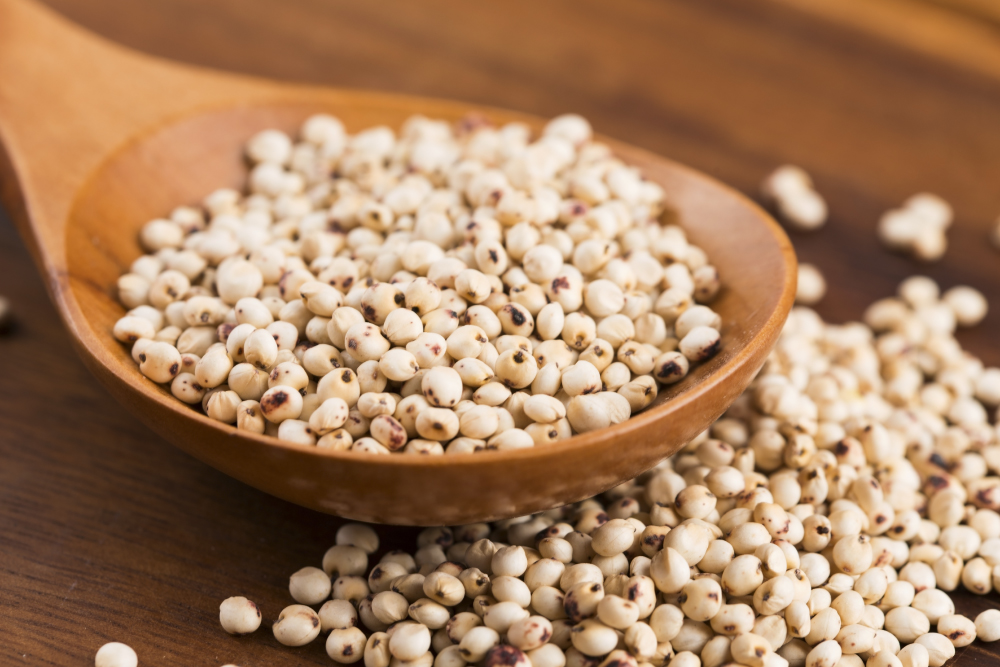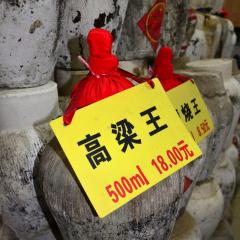Results from a QAAFI study show the bran fraction of Australia’s only white coloured sorghum hybrid, Liberty, contains a broad range of ‘healthy’ phytochemicals – raising the grain’s potential for human health food markets.
While the gluten-free status of sorghum was already known, there has been minor interests by the Australian food sector, despite sorghum being a food staple in many other countries, including India, and Ethiopia.
However, it is now known that sorghum’s potential health benefits are not just in its gluten-free status, but also in the high concentration of phytochemicals, especially antioxidants, in the bran layer.
The QAAFI study, which also included chickpea and soybean products from a Queensland gluten-free flour mill, were compared to shop-bought rice and rice bran, oat and oat bran, psyllium husks and quinoa.

Results showed higher concentrations of a number of compounds including phenolic acids and flavonoids in the sorghum bran fractions. In some specific phytochemicals, these concentrations were twice the concentration to other products, such as psyllium husks, which is considered a high fibre health product.
There has been occasional misleading information about tannins in sorghum. In the white sorghum tested in this project, there was no tannin present using a standard lab test. However, psyllium bran had the highest amount of tannin in the grains tested. While tannin has been previously reported as having human health benefits, it gets some bad publicity, especially in some animal sectors. There is tannin in red sorghums but in very low amounts.
To better understand the potential value of the sorghum bran in human health, a laboratory in-vitro assay comparing the sorghum bran against whole sorghum meal and pearled sorghum showed a significant reduction in the rate of glucose release, suggesting a positive control on glucose in the diet.
Dr Michael Netzel, a Senior Research Fellow at QAAFI, said that the polyphenolic compounds in white sorghum bran exert an inhibitory effect on starch digestibility resulting in a significantly lower glucose release. This could present an important nutritional benefit of sorghum and sorghum bran if confirmed in human studies.
It should be noted that the results from this study only relate to the samples supplied by the industry partner for the project. It is known that bioactive compounds such as polyphenols and carotenoids in plant material (and subsequently derived processed products) can vary depending on the geographical location, environmental conditions and genetics.
To generate scientific evidence and to substantiate the observed in-vitro results of the present study, additional research through human trials, using selected sorghum products to measure the actual bioavailability and metabolism of the main bioactive compounds and subsequently bioactivity (potential health benefits) are required.
Industry partner, Ron Plant from Maralong Milling said the preliminary investigation provides a better understanding of the phytochemical composition and potential nutritional value of the mill’s products
“We now have the scientific knowledge to put forward to potential customers, the nutritional and health benefits of this ancient grain compared to other similar grains in the market place,” Mr Plant said.
This project was jointly funded by the Australian Department of Industry and Science, and Maralong Milling through the Innovation Connections program.
A healthy future for sorghum
Sorghum is the largest summer grain crop grown in Australia with an average of 2.2 million tonnes and farm gate value $300 million per annum. Since its introduction as a crop into Queensland in the 1900’s, it has mainly been considered animal feed. It expanded into northern NSW over the next few decades as did the dominant summer crop, cotton. Cotton and sorghum became the typical northern farming system summer cropping mix. The primary target for northern growers in planting sorghum has been as a relatively easy cash crop for local feed industries, primarily cattle feedlots. However, while sorghum has potentially high level of metabolisible energy, there were limitations as the high energy starch was bound up in poorly digestible protein. However, this so-called poorly digestible protein problem may, in human foods, be an attractive benefit as an inhibitor on glucose release. Further, the protein in sorghum is free from gluten, making sorghum a potentially appealing high energy, gluten-free grain.
Story reprinted from GRDC’s Ground Cover




